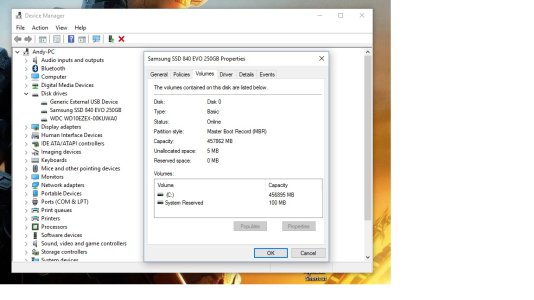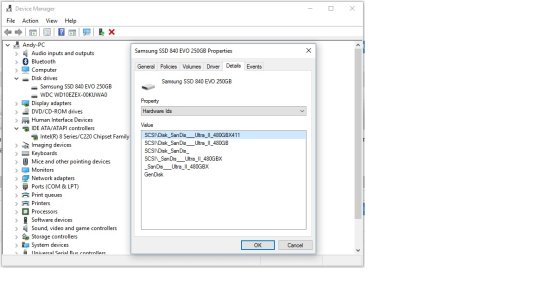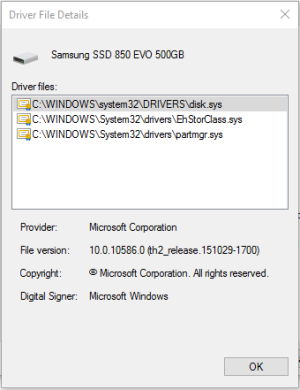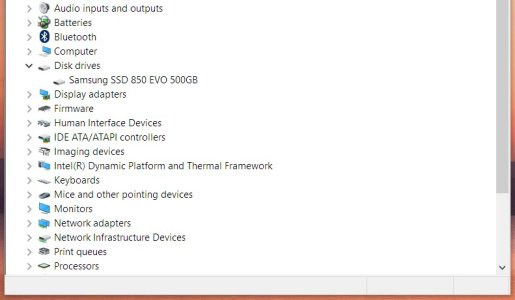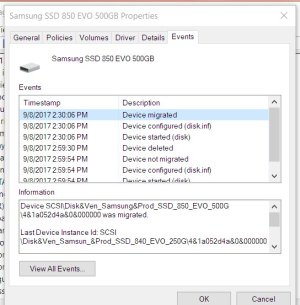- May 9, 2013
- 595
- 0
- 0
I have an odd issue where a Samsung SSD that is no longer in my system is still showing. The weird thing is if I bring up the properties, and then populate the fields of the drive (by pressing the populate button), it shows the capacity of the newer drive which is double the size. This drive is not a Samsung drive though. So I'm not sure what's going on here - see picture where it clearly states (at the top) that I'm looking at the properties of a 250GB Samsung drive, but the populated fields show it to be a 480GB drive.
